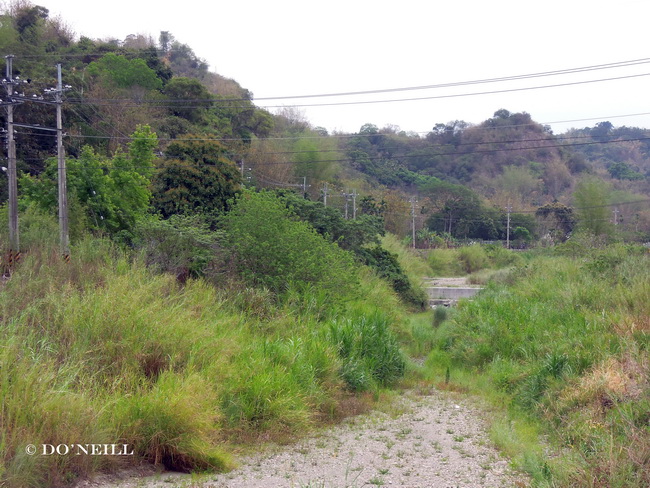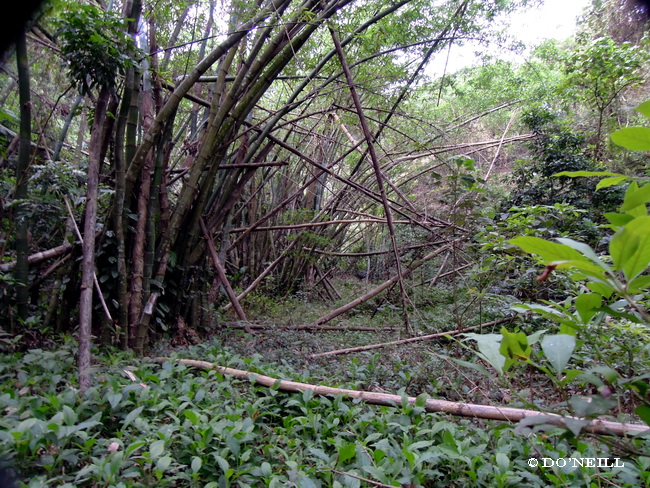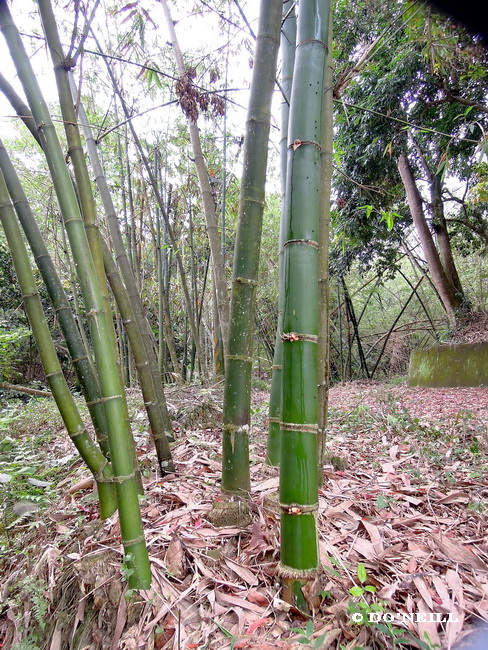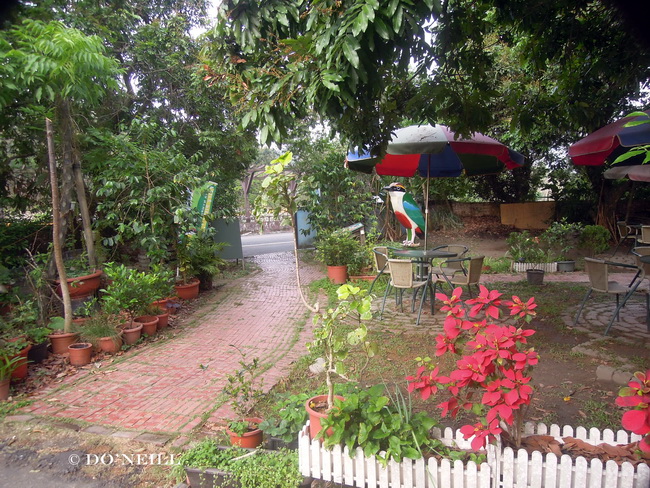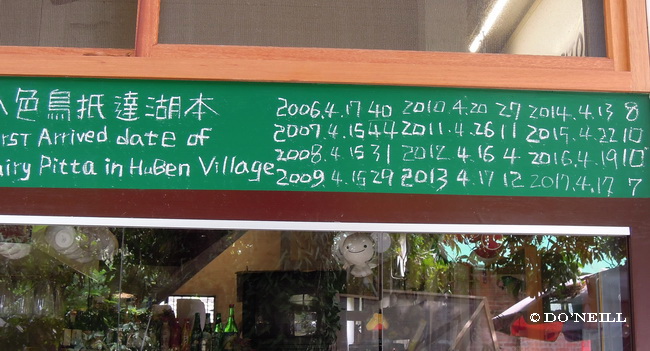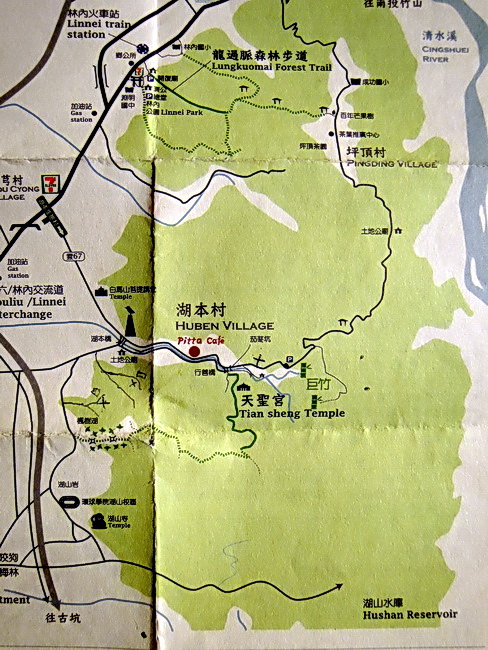Birding Highlights of Taiwan 2017 Series
“The study of Fairy Pitta (Pitta nympha) is well researched and documented since 2000 by researchers of TESRI (Taiwan Endemic Species Research Institute), under stalwartship of Professor Scott Lin.
“In addition to other prospective areas in Taiwan ROC, best known to only researchers- the presence of these breeding visitors, Linnei-Hushan forest area in central west Taiwan ROC is designated as study and monitoring area for Pitta nympha- the renowned and signatory Fairy bird.
“The forest area is also listed by Birdlife International as an IBA (Important Bird Area) for its qualifying criteria – as breeding grounds for Fairy Pitta – a species considered ‘VULNERABLE’ under IUCN red list category. The species was upgraded from ‘THREATENED’ since 1994.
“The rich habitat of dense, broad-leaved forest, undulating grounds with low hill slopes, near river/streams, edge of forest/ dwellings and bamboo forests are favourable breeding grounds for these creatures (above).
“Known to be ground dwellers, these mysterious birds spend ample time calling from tall trees, especially in the beginning of breeding season, which falls around mid-April to early May.
“Bamboo forests especially Taiwan Giant Bamboo (Dendrocalamus latiflorus) are favourite haunts for Fairy Pitta and Linnei-Hushan forest area boasts no lack of them (above, below).
“To zoom in on Pitta bird population in Huben village, we need to revisit Pitta Café (below)
“Here, a board is raised by researching team to account for Fairy Pittas’ sightings – arrival dates from year 2006-present times (below).
“The latest count for 2017 information provided is 8 birds in Huben village and 41 in surrounding areas (below).
“Over a ten-year period, a steady decline of birds in Huben village shown. There was a sudden drop in 2011 population count, and after… went into near single digit numbers and never recovered.
“During my visit in late April- early May 2017, I had the opportunity to meet up with some members of the researching team. They were in the midst of their annual, intensive monitoring, population programme of Fairy Pitta. In conversation, it was confirmed to be sadly so especially for Huben village- once known to be flushed with Pitta nympha.
“May I also add, in researcher’s conversation, a GPS tracker was successfully inserted to a mist netted bird and awaiting recapture. Perhaps then, would we get to know a bit more and whereabouts the wintering grounds of Fairy Pitta.
“What happened in 2010-2011 that caused that sudden drop and then into decline?
“History records 2010 as the defined year of severe natural disasters ; pertaining to earthquakes, tsunamis, typhoons, volcanic eruption, nuclear meltdown (Fukushima-Honshu) and floods in countries- Indonesia, Myanmar, Philippines, Thailand and Japan.
“All these disastrous events happened during October 2010-March 2011 in unknown or non breeding locations of Pitta nympha. In addition to other wild life and bird species’ loss as a result of these disasters, the presence of potentially unknown wintering grounds of Fairy Pitta in those affected areas mentioned cannot be discounted.
“I am not aware following the nuclear disaster in Fukushima, there had been any papers written that evaluated pre and post bird species’ populations affected by such a terrible disaster. Such catastrophic accident poisons all creature living things, human beings, the environment/habitat within they live and the sea for a very long time.
“Common Kingfisher (Alcedo atthis) that used to be commonly seen during my field outings, have been observed to become uncommon sightings in my hometown, Penang Malaysia, following the nuclear meltdown.
“Steven Sasoon, inventor and father of digital photography in 1975- would he to know that following his invention, digital photography became vogue in later years and revolutionized the way photographs were being taken. Did he know, he invented a ‘two- edged sword’ that could be fatal in wrong hands?
“By early year 2000, craze for wildlife/bird-photography had begun. Amateur photographers were using flash mode, some without understanding and mindful they/some be flashing daylights out of bird hatchings and distracting breeding birds.
“While camera companies fiercely competed in R&D technology excellence, new gizmo models were being competitively marketed and former cashed in to the growing appetite of wildlife/bird photographers.
“Any one knows of a camera company that spells out the humane responsibility and ethical practice of wild life photography that comes with customers’ purchase?
“If tobacco companies are obliged by law to insert health warnings on packaging prior making a cigarette purchase, it would usher well for camera companies to do similar- flash themselves a good repute. ‘Be wildlife conservation friendly too’.
“2010 was also the year where digital photography underwent on overdrive for competitive new/ better models with improved high resolution images. They ranged from digital SLR cameras of variable lens sizes to baking tin sized hoods, point and shoot cameras where budget permit, resurrecting a new generation of shutter bugs crazed over bird photography, aspiring for perfect, imagery bird shots.
“To what cost did not matter. The use of flash photography went unchecked and resurrected with it, its evil twin- the habitual misuse/overuse of playback bird sound recordings with intention to draw out desired bird.
“Tape recorders are meant to be tools for specialized use by science researchers, as to the monitoring population of Fairy Pitta in field work. The appropriate timing and knowledgeable use of bird playback calls is essential to obtain optimum results; executed with minimal disturbances to breeding birds especially.
“Somehow, it became an international cancerous ‘in-thing’. The usage idea fell into hands of amateur-immature birders/bird-photographers. Some less knowledgeable/obsessive recalcitrants, who unfortunately, misuse/overly use contraption with no guaranteed results-but only to uncaringly distract, stress and frustrate breeding birds to simply abandon their propagating objectives.
“Time clock count down for Fairy Pitta in Huben Village has started ticking away.
“Professional bird guides would do well to take extra care to the overly use of call back recordings and be not too desperate to please their clients, especially in Huben village. It will be prudence to consider limit/off limit or moratorium visitations to known breeding sites once nesting stage has begun and not get greedy. ‘In killing the goose that lays the golden egg’, so to speak.
“It is without doubt, forest lands/habitats in countries where breeding Fairy Pittas live in, get sacrificed to make way for housing, development and boost economical wealth. The result is a permanent loss and reduced population of these already Vulnerable species.
“The controversial Hushan reservoir finally got built and completed in 2016, after several delays since 2002. 7.7km from Huben Village, in Douliou city area, this dam convinced the local populace of constant provision of water to drought areas in Yunlin County, improve water quality for domestic usage and most of all, the prime intention to feed production industries nearby that require huge amounts of water.
“The building of Hushan reservoir dam is living testimony of conservative efforts, geopolitical and commercial interests in conflict. Built within the Linnei-Hushan forests area, 442ha of potential Pitta habitat land, the equivalent of approximately twenty Fairy Pitta’s breeding space had to be sacrificed, based on statistical population survey of the area.
“I had the opportunity to meet the dam’s construction chief engineer over dinner and successfully persuaded him to present his project to us- diners one evening. From his point of view, it was a humongous project he had undertaken with huge challenges, pride and satisfaction. It cost the government of Taiwan ROC, a whoopee NT$20.47 billion to build and had taken over 10 years to completion.
“At the end of the day, conservationist/activists were left to mull over the idea, as to whether sacrificing twenty ‘Pak Sik Neo’s’ habitat is more important or have clean water for shower!
“Well… ‘Money makes the world go round and talks the loudest,’ the saying goes, having to sacrifice ‘kill mother-in-laws’ twenty abode is simply a vanishing and luxurious existence… like fairies(sigh).”
Avian Writer Daisy O’Neill
Penang Malaysia
Copyright article and all copy images
Courtesy of Daisy O’Neill Bird Conservation Fund
Note:
1).Visitors can help curb dwindling population of Fairy Pitta in Huben Village by scheduling visits in late April- early May before nesting phrase, thus giving more opportunities for undisturbed birds to breed successfully.
2). Any Fairy Pitta sighting found with identification GPS tracker kindly contact TESRI immediately to give researchers first opportunity to capture bird. Contact: [email protected].
References: Birdlife International Internet research papers
Appreciation and thanks: Ms Yao, JH Chen, Mrs. Scott Lin


